
Blade Runner, released in 1982, is cinematographically one of the most beautiful science fiction movies. Its sequel Blade Runner 2049 had big shoes to fill. In the opening scene, the sky is illuminated by gas flares erupting from industry.
The Blade Runner is “Deckard”, played by Harrison Ford in one of his break-out roles. In the movie, as an avatar of a ‘bounty hunter character’ he visits an industrial tycoon called ‘Tyrell’, who has conglomerate interests, one of which is the creation of replicants, human simulacra with a limited lifespan, to be used as slaves. On arrival at the tycoon’s estate, he is greeted by “Rachael”, a beautiful woman. Together they discuss the work of the Tyrell Corporation and Deckard’s role in hunting down replicants who seek their freedom. They have the following exchange:

It would be true to say that I wouldn’t have an issue with Labour and the Greens if they were a benefit to New Zealand rather than a hazard.
1982 was not only the year of Blade Runner but also the peak of Muldoon’s “Think Big” project enthusiasms. An enthusiasm that the Ardern Government has also been accused of regarding their (NZ) $12 Billion infrastructure program.
But this program does not include the development of the Taranaki gas fields, so we won’t be seeing plumes lighting up a wealthy and progressive regional hub. Rather, the closing of any offshore future fossil fuel exploration and development (in 2017), pursuant to a back-room deal between Labour and the Greens, will cost Taranaki and the country $30 billion in revenue and thousands of jobs between now and 2049 (lol 2050); an expensive ticket, paid for by voters, to give Labour power.
This passive/aggressive stance to the fossil fuel industry gets worse – even on the most basic face of things. For example, traditional gas-fuelled power stations are more efficient and have a smaller carbon footprint that coal powered electricity producers, e.g. Huntly. Coal powered electricity stations can be converted to gas – assuming the gas is readily available over an extended period. With the closure of Taranaki development this is now not the case. So instead we are now burning an EXTRA million tons of dirty Indonesian brown coal per annum (5 times more than in previous years) to ‘keep the lights on’. How is that working out for our carbon footprint?
And the hazard worsens. In 2018 the Government was in talks with a Texan company called ‘8 Rivers’. Their NZ proxy company, “Pouakai NZ”, had the support of Taranaki iwi, city and local councils and NZ First (Shane Jones). This pilot plant would produce electricity, hydrogen, and nitrous fertilisers.
This company was wrangling the Government to support them through a Provincial Growth Fund grant of $20 million to investigate the building of a ‘pilot power plant’ in New Plymouth, in proximity to the gas fields.
Even at that time it was evident that NZ would need more power production and wanted to do it in a “green manner” as electricity demand has been increasing year upon year for decades:
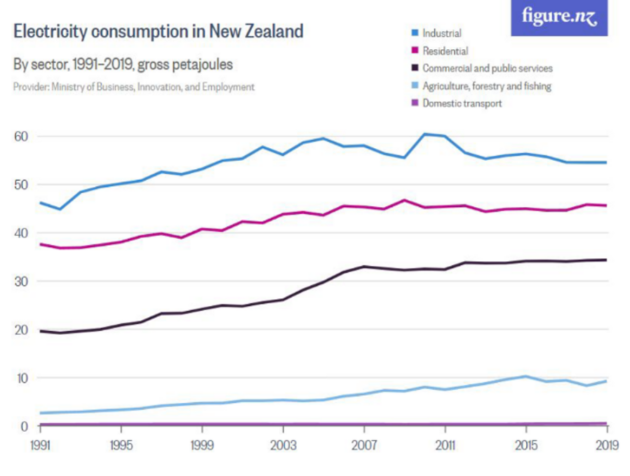
As well, we aspire to be a hydrogen economy. A 2022 report can be found at the MBIE website: https://www.mbie.govt.nz/building-and-energy/energy-and-natural-resources/energy-strategies-for-new-zealand/a-vision-for-hydrogen-in-new-zealand/roadmap-for-hydrogen-in-new-zealand/)
The trends in demand for electricity mirror other increasing global demands, for example, fertiliser. With a growing world population fertiliser has always been important.
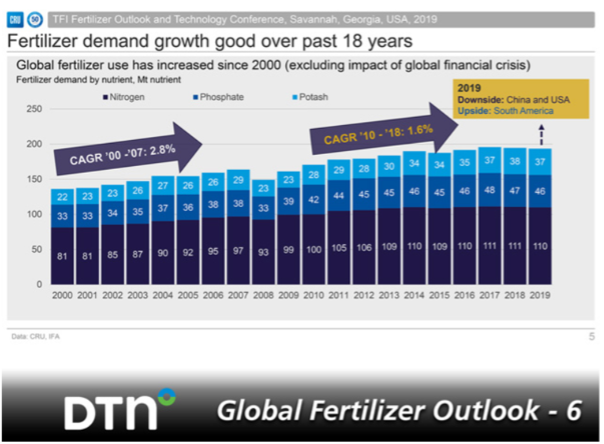
Moves to make NZ self-sufficient in fertiliser would in all cases have been wise. Now, with the war in Ukraine and bans on Russia exports, including nitrous fertilisers, the situation, like electricity has gone from “we need” to “we desperately” need fertiliser.
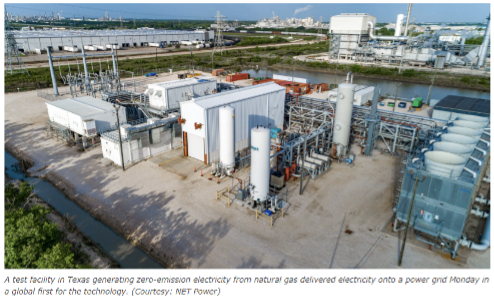
Even in ‘potash fertiliser’ we face a “Russian supply” issue. (Note that Belarus is an ally of Russia).
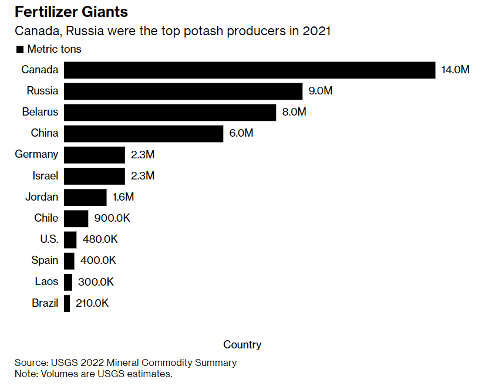
The proposed 8 Rivers/Pouakai NZ power plant would have produced 2 million tons of nitrogenous fertiliser per year – 1 million to be used locally and the rest exported i.e., there were many solid arguments for the establishment of the power plant.
The CO2 produced can be used industrially or pumped back into ground whence it came, i.e. a completely carbon neutral energy and product cycle. Exactly what the Greens and Labour are clamouring for.
The NZ Government was given every opportunity, for a token amount (the $20 million), to participate in this venture – and 8 Rivers/Pouakai NZ would have provided the additional 1 to 2 billion dollars of additional investment!
8 Rivers/Pouakai NZ wanted the regional fund payment as a demonstration of support and some sort of security that they were not going to be dumped on, as were the other energy companies, by another politically driven announcement. To put this $20 million into perspective – in 2019 the NZ government spent $914 million on consultancy fees.
How effective was this expenditure? An example: recently, $55 million was spent on the concept-idea of a cycling and walkway bridge across Auckland Harbour – to no final effect.
Unlike the ‘bridge to nowhere’ the 8Rivers/Pouakai NZ project was no ‘pipe dream’. A like system is now operational. A 50MW facility in La Porte, Texas, has been built AND is now plugged into the state power grid (November 2021).
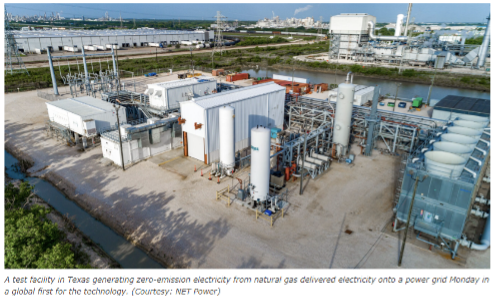
That is enough power for 5000 homes.
https://www.inc.com/kevin-j-ryan/net-power-zero-emissions-plant-global-warming.html
What’s more, in the UK, there is a 300-350 MW power station already under construction by “Whitetail”, based on this technology. The facility is being constructed at Sembcorp Energy UK’s Wilton International site on Teesdale. It will become the UK’s first Net Zero Emissions NET power plant. It is halfway finished in its construction. Power without pollution.
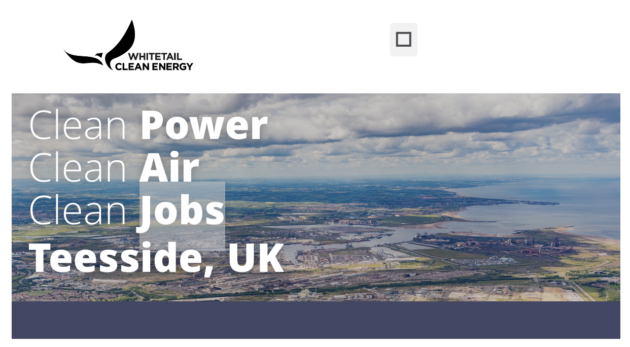
In summary:
- We could have used a progressive and transitional bridging technology to both reduce our carbon footprint and produce electricity.
- Because we have not adopted this technology our carbon footprint has increased.
- This new technology would not only have made New Zealand independent in nitrogenous fertilisers, now in desperate demand, but NZ would have become a net exporter of the fertiliser.
- The Taranaki and the NZ economy, and local workers, would all have benefited from this opportunity.
- The opportunity cost was minimal and stands in stark comparison to other monies currently being wasted by this Government.
We are now at the point where, if the Pouakai NZ project had been adopted, it would have been established and productive.
Ideology and a thirst for power overcame rationality. Currently, both the Greens and Labour have invested so much political capital in the idea of ridding the world of fossil fuels that they won’t back down – no matter how much it hurts the country and is contrary to even their own stated objectives!
While the majority of blame lies squarely at the feet of the Greens and Labour, one individual at the centre of this shameful situation is Minister Megan Woods, a person clearly in over her head regarding her portfolio. And the situation gets worse.
In my next article “Under the Lights – Methane and Hot Air Part Three” we will explore this matter further

